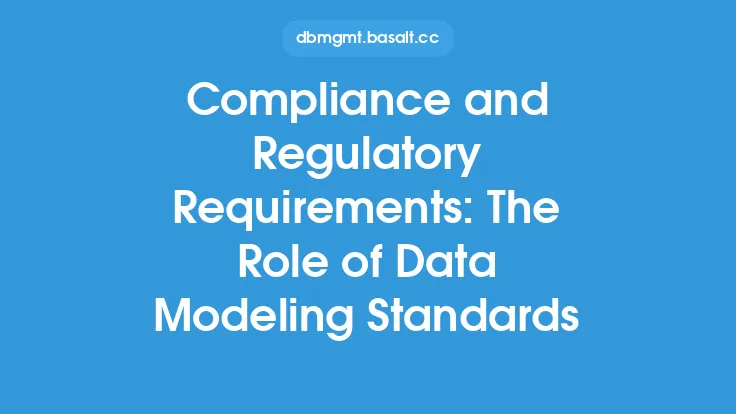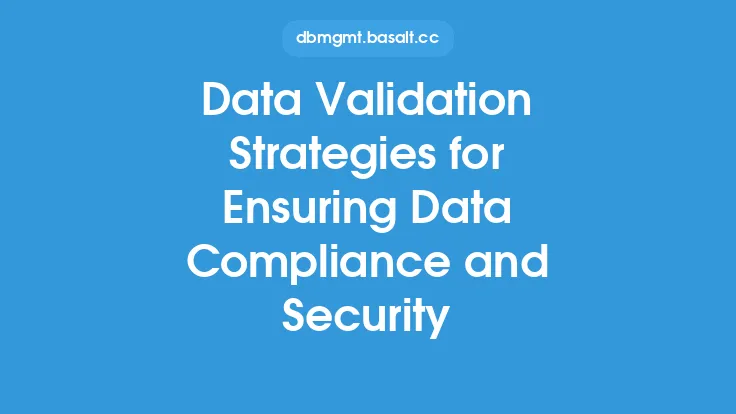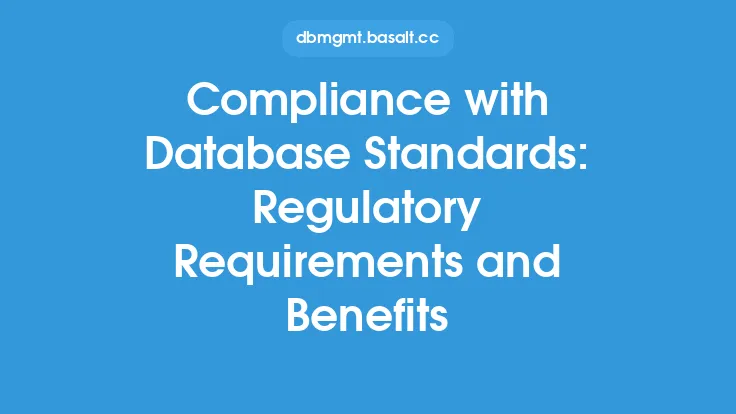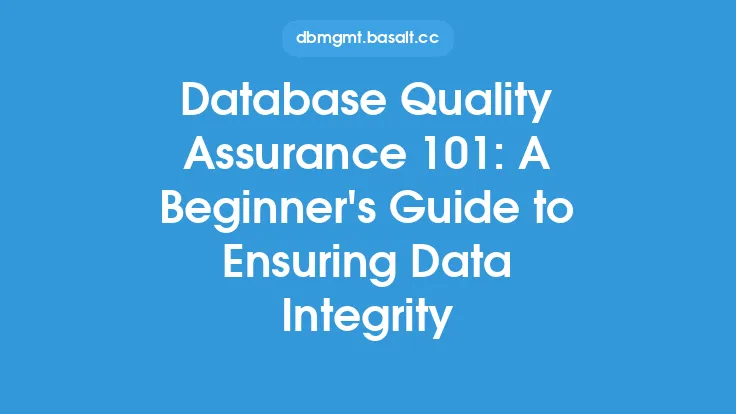Ensuring the quality and compliance of data is a critical aspect of any organization's data management strategy. With the increasing amount of data being generated and stored, it is essential to have a robust data quality and compliance framework in place to ensure that data is accurate, complete, and consistent. This framework is crucial in maintaining regulatory adherence, as non-compliance can result in severe penalties, reputational damage, and financial losses.
Introduction to Data Quality and Compliance
Data quality refers to the accuracy, completeness, and consistency of data, while compliance refers to the adherence to regulatory requirements and industry standards. Ensuring data quality and compliance is essential in maintaining the trust and confidence of stakeholders, including customers, investors, and regulatory bodies. A robust data quality and compliance framework helps organizations to identify, assess, and mitigate risks associated with poor data quality and non-compliance.
Regulatory Requirements and Industry Standards
There are various regulatory requirements and industry standards that organizations must comply with, depending on their industry, location, and type of data they handle. Some of the notable regulations include the General Data Protection Regulation (GDPR), Health Insurance Portability and Accountability Act (HIPAA), Payment Card Industry Data Security Standard (PCI DSS), and Sarbanes-Oxley Act (SOX). These regulations require organizations to implement robust data quality and compliance controls, including data encryption, access controls, and audit trails.
Data Quality Controls
Data quality controls are essential in ensuring the accuracy, completeness, and consistency of data. These controls include data validation, data verification, and data cleansing. Data validation involves checking data against predefined rules and constraints to ensure that it is accurate and complete. Data verification involves verifying data against external sources, such as customer databases or credit bureaus, to ensure that it is accurate and up-to-date. Data cleansing involves identifying and correcting errors, inconsistencies, and inaccuracies in data.
Compliance Controls
Compliance controls are essential in ensuring that organizations adhere to regulatory requirements and industry standards. These controls include access controls, audit trails, and data encryption. Access controls involve restricting access to sensitive data to authorized personnel only. Audit trails involve maintaining a record of all changes made to data, including who made the changes, when, and why. Data encryption involves protecting data from unauthorized access by encrypting it using secure encryption algorithms.
Data Governance and Stewardship
Data governance and stewardship are critical components of a robust data quality and compliance framework. Data governance involves defining policies, procedures, and standards for data management, while data stewardship involves assigning responsibility for data quality and compliance to specific individuals or teams. Data governance and stewardship help ensure that data is managed consistently across the organization and that data quality and compliance issues are identified and addressed promptly.
Technology and Tools
There are various technologies and tools available to support data quality and compliance, including data quality software, compliance management software, and data governance platforms. Data quality software helps organizations to identify, assess, and mitigate data quality issues, while compliance management software helps organizations to manage compliance with regulatory requirements and industry standards. Data governance platforms help organizations to define, implement, and enforce data governance policies and procedures.
Best Practices
There are several best practices that organizations can follow to ensure data quality and compliance, including defining clear data governance policies and procedures, assigning responsibility for data quality and compliance, implementing robust data quality and compliance controls, and providing training and awareness programs for employees. Organizations should also regularly review and update their data quality and compliance framework to ensure that it remains effective and relevant.
Conclusion
Ensuring data quality and compliance is a critical aspect of any organization's data management strategy. A robust data quality and compliance framework helps organizations to maintain regulatory adherence, protect sensitive data, and build trust and confidence with stakeholders. By implementing robust data quality and compliance controls, assigning responsibility for data quality and compliance, and providing training and awareness programs for employees, organizations can ensure that their data is accurate, complete, and consistent, and that they are complying with regulatory requirements and industry standards.





